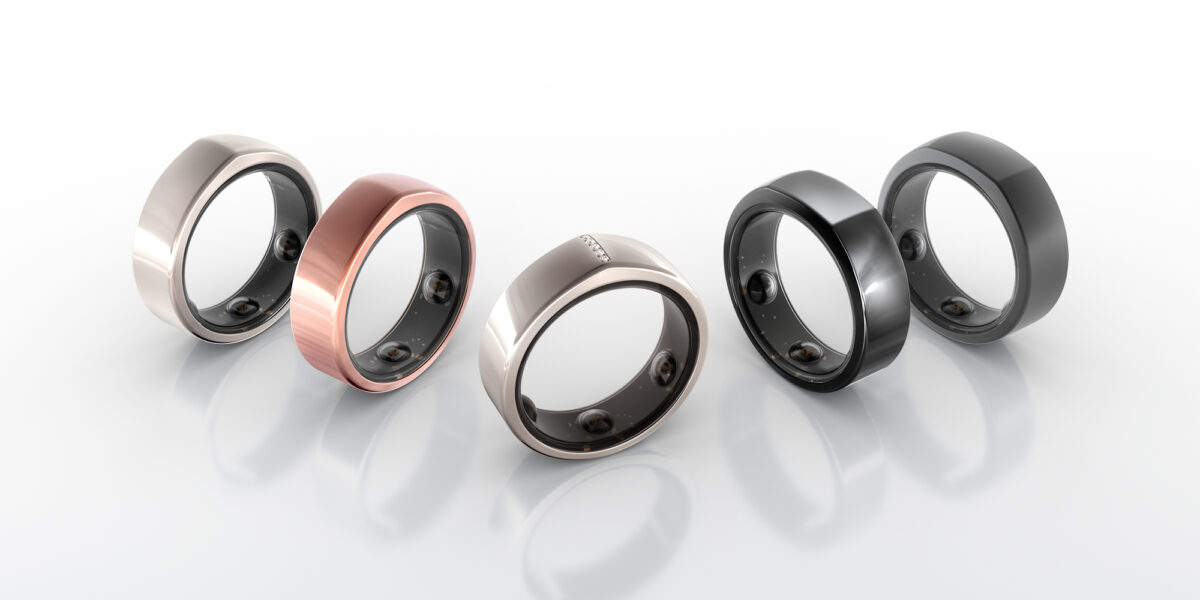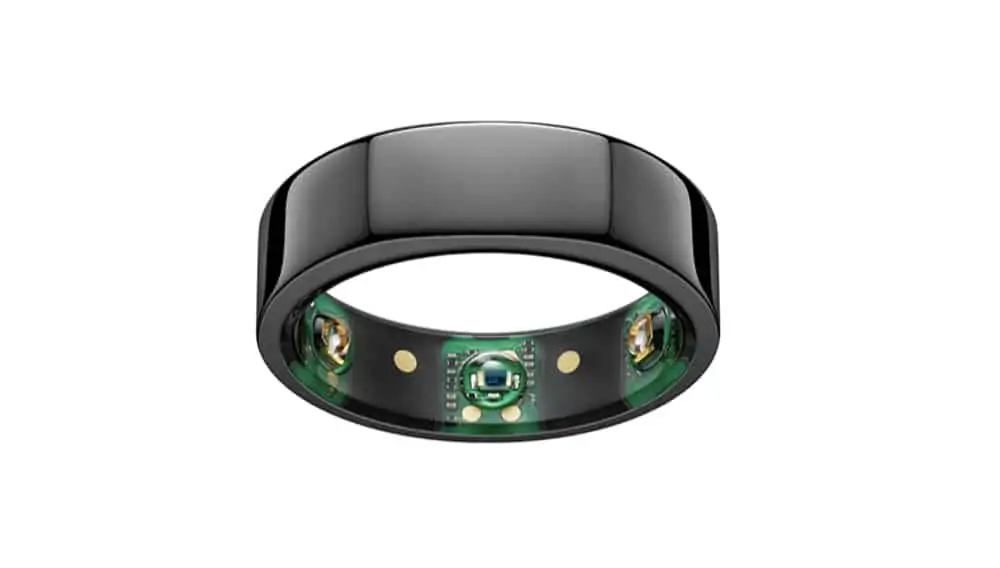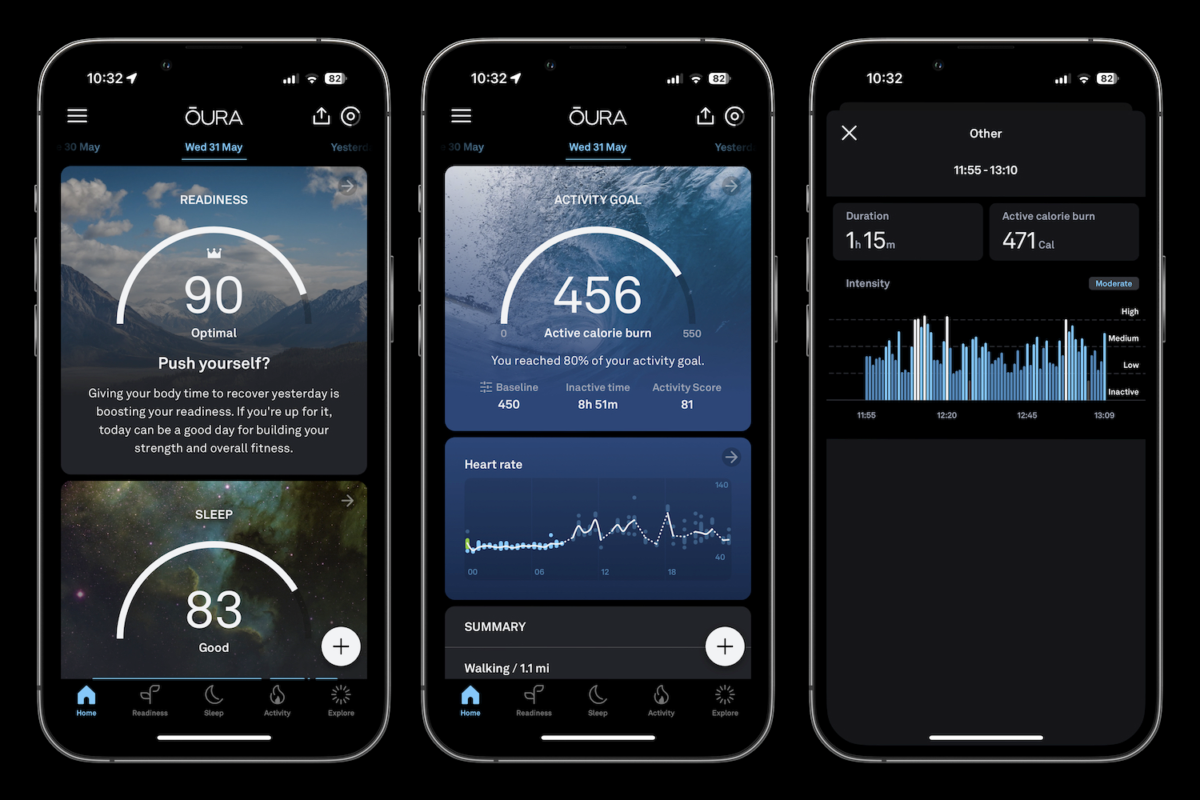TL;DR
Is The Oura Ring Legit?
- Design: Sleek, stylish ring made of lightweight titanium; available in four finishes (silver, black, stealth, gold).
- Health Tracking: Monitors sleep, heart rate, respiratory rate, body temperature, and activity.
- Comfort: Lightweight and discreet; can be worn on any finger.
- Durability Issues: Prone to scratches; not suitable for weightlifting (risk of finger injury).
- Subscription Model: Requires a monthly fee to access detailed data, which many users find off-putting.
- Battery Life: Lasts 4-5 days, but degrades over time.
- App Integration: Compatible with iOS and Android, integrates with Apple Health and Google Fit.
- Pricing: $299 for silver/black, $399 for stealth/gold.
The Oura Ring is a novel concept and its main party trick is simple: take what Apple Watch and other smartwatches do, cram it into a ring, collect reams of biometric data, and then get users to pay to access it.
As business models go, this is a fairly solid grift. The concept, the design, the health tracking features – they’re all rock-solid. But is it any good in practice? Concepts or new-form devices are great but the question most don’t ask is whether it actually solves any actual problems?
Here’s everything you need to know about what Oura Ring does, what it’s like using and living with one, its PROS and CONS, and the alternatives you should know about before committing to buying one.
What is The Oura Ring?

At first glance, the Oura Ring might seem like something out of science fiction. Yet, this advanced piece of technology is very much a product of the present.
I tested a review unit out when it first came out and, while I was initially impressed by what it could do, the more I used it, the more I discovered that I didn’t totally love it.
Granted, things have moved on – we’re now on Oura Ring 3, and the one I tested was the OG model. To be honest, not too much has changed in the user experience and battery department. Newer models like the Oura Ring 3 simply have better and more advanced tracking with support for things like SpO2 tracking, workout heart rate tracking, and daytime heart rate monitoring.
It does look good though and, at least in my experience, it is fairly comfortable to wear being both lightweight and rather easy on the eyes. To be frank, it is the type of thing you could wear and no one would know it was a fitness tracker. Plenty of my mates had no idea until I told them.
Encased in sleek titanium, the Oura Ring houses a suite of sophisticated electronics and sensors. These allow it to monitor a range of health metrics, from heart rate and respiratory rate to body temperature and sleep patterns.
A Distinct Alternative to Traditional Fitness Trackers

For a certain type of user, I can see the appeal of the Oura ring. It looks great, it is pretty novel, and it tracks pretty much everything you’ll ever need tracking – from sleep stuff to steps and stress, as well as your heart. That’s good. But Apple, Garmin, and Samsung watches also do this too.
Really, the appeal here is the form factor: it’s a ring, some people like rings, so bung a load of sensors in one and, hey, maybe people that hate wearing watches will buy one? It’s solid logic, but I still don’t see the market for this kind of product versus smartwatches.
Early adopters and watch-haters aside, the concept of the smart-ring hasn’t gained much traction in macro-market sense. But those that do use it, and pay for access to the “better data” seem to like what Oura’s doing. It has cross-platform app support, so you can run it on any phone, whether iPhone or Android, and its tracking is pretty impressive for a device so small.
Me? I still prefer a smartwatch. It just delivers more utility; I can screen calls and messages, tell the time, check my pace on runs, my heart rate. And for the cost of the Oura, you can basically pick up any of the best smartwatches on the market right now, including Apple Watch.
For me, it’s a tough sell. Unless you’re completely sold on the concept, I’d still recommend a smartwatch – and the one I’d recommend is either an Apple Watch or a Garmin.
Design and Build

The Oura Ring is not just a tech gadget; it’s also a piece of jewelry. Designed to be both fashionable and functional, it looks like a thick band ring—popular for their bold, sturdy appearance. The ring maintains a nearly perfect round shape, with a slight flat spot at the top for comfort.
Available in four finishes, all made from lightweight titanium, the Oura Ring can match any style:
- Silver
- Black
- Stealth (dark grey/black)
- Gold (limited edition)
Despite its robust build, the ring is incredibly lightweight, weighing between 4 to 6 grams depending on size. It measures 7.9mm in width and 2.55mm in thickness. Its water resistance up to 100 meters means it can withstand daily activities, from handwashing to showering. Available in eight sizes, it can be worn on any finger, though most users prefer the index or ring finger.
You SHOULD NOT lift weights with it on though. Google something called “degloving” – actually, don’t. It’s disgusting. But if you like having all of your fingers attached to your hand NEVER LIFT WEIGHTS WITH A RING ON – any ring!
High-Tech Tracking
Packed into the Oura Ring’s small frame are several high-tech sensors:
- Infrared LED sensors
- NTC body temperature sensor
- 3D accelerometer
- Gyroscope
These sensors enable the ring to capture detailed health data:
- Blood pulse volume: Measures respiratory rate, heart rate, and heart rate variability (HRV).
- Body temperature: Monitors overall health and potential illness.
- Movement: Tracks physical activity and calculates metrics like steps and calorie burn.
- Sleep patterns: Analyzes sleep quality and stages.
With this wealth of data, the Oura Ring’s software provides comprehensive insights into sleep quality, daily activity, calorie expenditure, and readiness for physical exertion.
Battery Life and Charging
With wearables – either smartwatches or rings – battery life is always going to be important. I had an Oura for a few months back when it came out and, while the battery life was decent compared to my Apple Watch, it was still far less than I had hoped.
Best case scenario, you’re looking at 4-5 days. But that’s on a fresh model with a fresh battery. Once the (non-removable) battery starts to degrade after 100 or so cycles, that number’s going to come crashing down quickly.
For me, this is the big sticking point with devices like the Oura (and the Samsung Galaxy Ring). For what it does, I can get just as good data from my Garmin Fenix 6. Granted, it is more expensive. But the battery life lasts for like 30-days, sometimes longer when the sun’s out (it has a solar panel for catching rays).
And the data I get from my Garmin watch is not only more nuanced and granular, but it is laid out in an easier, more actionable way inside Garmin Connect. And I don’t have to pay to access it – the data is included with the price of the watch. This is the way Apple Watch works too.
App Integration

The Oura Ring’s companion app, available for both iOS and Android, allows users to track their health data over time with daily, weekly, and monthly trends.
This app integration extends to Apple Health and Google Fit, allowing for a consolidated view of health metrics across multiple platforms.
The app itself is very simple to use. If you’re coming from Garmin Connect or Polar’s suite of apps, it’ll feel like going back to pre-school. Everything you need is there but I feel that Oura relies far too heavily on summarising data; there’s not enough additional, granular data available for me which is why I ended up sticking with Garmin – the data it collects and its Connect app, while now looking a little clunky, is orders of magnitude better.
I feel like Oura’s approach is to make the app as simple as possible, so everybody can use it – not just tech heads that like to exercise a lot. And I get it, that makes sense. Oura is a business and it wants people from all walks of life using its products, so making the app easy to use is always going to be a priority. I just wish they gave you a bit more detail in the data.
And I refuse to pay for my biometrics. To me, that is criminal. I paid for the hardware to monitor my data, why the hell should I have to pay to access it? That makes literally no sense. Oura makes bank on the hardware, just like Apple and Garmin, you can’t just start charging people for access to it. Well, you can, but I’ll go elsewhere.
Pricing
The Oura Ring is a premium device with a price tag to match, reflecting its advanced technology and design. Prices vary based on the finish:
- Silver or Black: $299
- Stealth or Gold: $399
All models offer the same features, ensuring no compromise on functionality regardless of the price. But if you want the best possible data metrics, you’re going to have to pay for it – and that for me is a big deal-breaker.
I refuse to pay for my biometrics. To me, that is criminal. I paid for the hardware to monitor my data, why the hell should I have to pay to access that data? It makes literally no sense. Oura makes bank on the hardware, just like Apple and Garmin. You paid Oura for a device that collects data. It’s been paid once. I don’t see why I should have to pay again to access the actual data?
Oura Ring FAQs
We covered the basics of what the Oura Ring does above, its pros and cons, but we didn’t really touch on the different generations of it.
Here’s some additional details on the Oura Ring 1 and its subsequent versions…
Oura Ring 1 vs 2 vs 3 – Key Differences
- Gen 1:
- Basic sleep and activity tracking
- No longer supported
- Gen 2:
- Improved sensors
- Sleep staging
- Readiness score
- Gen 3:
- Added daytime heart rate monitoring
- SpO2 sensor
- Workout heart rate tracking
- More advanced features
Oura Ring Horizon vs Heritage
- Design Differences:
- Horizon: Sleek, seamless look
- Heritage: Flattened top
- Hardware and Features: Identical for both designs
Limited Edition Models
- Oura has released special edition rings, such as the Gucci x Oura Ring.
- Information on current limited editions is not available.
Oura Ring 3 vs 2 Features
- Gen 3 Enhancements:
- Daytime heart rate monitoring
- Improved sleep tracking accuracy
- New meditation features
- Similar battery life to Gen 2
- Requires a subscription for full features
Oura Ring 3 Colors/Finishes
- Available in:
- Gold
- Rose gold
- Silver
- Black
- Stealth (dark gray)
- Brushed titanium
Oura Ring 3 Battery Life
- Typically lasts 4-7 days on a single charge


